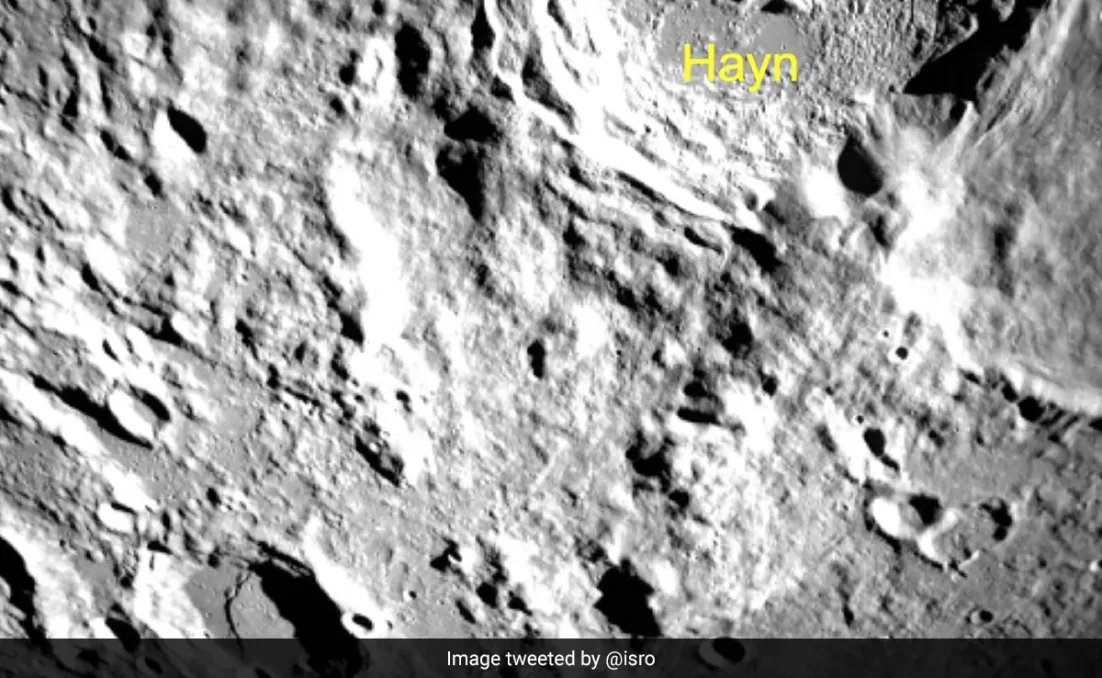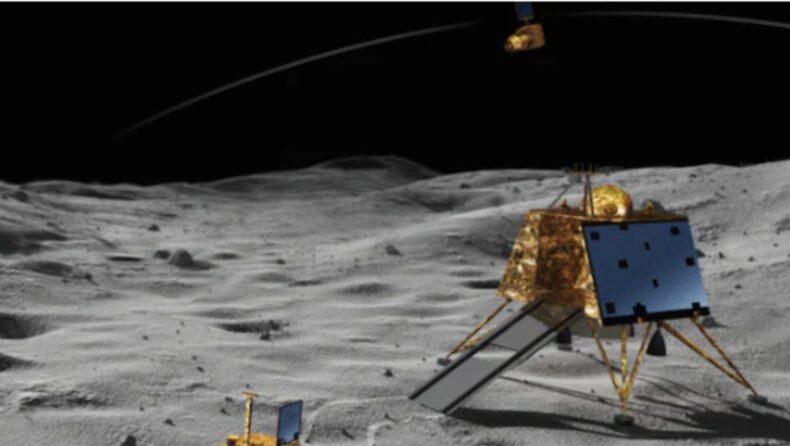As anticipation builds up for the much-anticipated touchdown of Chandrayaan-3’s Vikram lander on the Moon’s south polar region, recent developments have captured the attention of space enthusiasts and scientists alike. The Indian Space Research Organisation (ISRO) has shared fresh images of the lunar surface, showcasing some of the prominent craters on the Moon’s far side. These images have not only piqued curiosity but also play a crucial role in ensuring a safe landing for the Vikram lander.
The Significance of Chandrayaan-3’s Mission
Chandrayaan-3’s mission holds immense significance in the realm of space exploration. Scheduled to touch down on the Moon’s south polar region at 6:04 pm on a historic Wednesday, if successful, India will become the fourth country to achieve this feat, joining the ranks of the US, Russia, and China. This accomplishment will mark another remarkable milestone in India’s space endeavors and contribute valuable insights to our understanding of the Moon’s geological and environmental conditions.
Capturing the Moon’s Far Side
The latest images shared by ISRO provide a glimpse of the Moon’s far side, a region that is perpetually hidden from Earth’s view due to synchronous rotation. This unique perspective offers scientists a rare opportunity to study and analyze the surface features of this relatively unexplored lunar hemisphere.

Identifying Prominent Craters
The images captured by Chandrayaan-3’s lander have revealed some of the prominent craters on the Moon’s far side. Craters such as Hayn, Boss L, Mare Humboldtianum, and Bel’kovich have been identified, each offering valuable information about the Moon’s geological history and impact events.
The Role of Lander Hazard Detection and Avoidance Camera (LHDAC)
One of the key components of Chandrayaan-3’s mission is the Lander Hazard Detection and Avoidance Camera (LHDAC). This camera plays a pivotal role in locating a safe landing area for the Vikram lander. By capturing high-resolution images of the lunar surface, the LHDAC assists in identifying potential hazards such as boulders and deep trenches that could pose a threat to a successful landing.
Preparing for a Historic Touchdown
The images taken by the LHDAC serve as a visual guide for ISRO’s scientists and engineers as they meticulously plan the Vikram lander’s descent. The goal is to identify a landing site that is not only scientifically interesting but also free from obstacles that could jeopardize the mission’s success. The detailed analysis of the identified craters and surface features aids in making informed decisions about the landing site.
ISRO’s Remarkable Achievement
ISRO’s dedication to space exploration and technological innovation is evident through the Chandrayaan-3 mission. The successful capture of images from the Moon’s far side showcases India’s capabilities in developing advanced imaging technology and conducting complex space missions. This achievement is a testament to ISRO’s commitment to pushing the boundaries of space exploration.
A Step Towards Understanding the Moon
The insights gained from Chandrayaan-3’s mission go beyond the immediate goal of achieving a successful lunar landing. By studying the Moon’s far side and its surface features, scientists can gain valuable information about the Moon’s geological history, impact events, and evolution over time. This knowledge contributes to our broader understanding of planetary formation and evolution in our solar system.
Looking Ahead
As Chandrayaan-3’s Vikram lander prepares for its historic touchdown, the anticipation and excitement continue to grow. The images captured by the LHDAC provide a glimpse of what lies ahead for India’s lunar exploration mission. Regardless of the outcome, the mission’s impact on scientific knowledge and technological advancement is undeniable, cementing India’s position as a significant player in the field of space exploration.
In the countdown to the Vikram lander’s historic touch on the Moon’s south polar region, the revelation of far side craters through Chandrayaan-3’s images adds a layer of excitement and significance to the mission. As the world watches, India’s accomplishments in space exploration remind us of the boundless potential of human curiosity and ingenuity.













